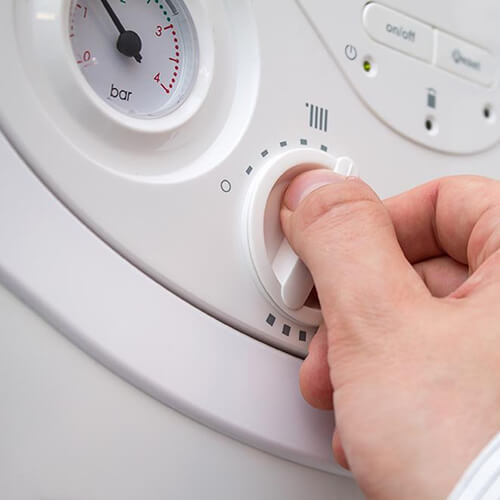- Contact 0870 350 7767
- |
- Advertise
Home > Mayne Gas Heating Ltd > How do I bleed my radiators?
How do I bleed my radiators?
 News and PR from Mayne Gas Heating Ltd - Published 10 June 2019
Our step by step guide takes the pain out of this necessary task...
News and PR from Mayne Gas Heating Ltd - Published 10 June 2019
Our step by step guide takes the pain out of this necessary task...
What to check for when bleeding your radiators
Whether youve identified a problem or would like to check for any issues, well take you through the necessary steps on how to check your heating system and how to bleed your radiators.
1. Turn on your heating system Ensure all radiators are turned up to the highest setting (if applicable). Wait until all your radiators are fully heated up.
2. Check each radiator You might want to grab a pair of gloves or a tea towel to protect your hands for this one. Check each radiator in the house. A healthy radiator should have an even distribution across the whole unit. What youre looking for is any cold spots, especially towards the top of the unit or any gurgling noises in that unit.
Even if youve previously noticed a problem in one radiator, its worth checking the rest of the house to identify any other issues. Working your way through the house.
3. Turn off your heating system let the radiators cool fully. The last thing you need is hot water splashing our while youre bleeding them. This will also allow for any sediment to settle.
4. What youll need Youll need a couple of simple tools in order to bleed your radiators. Firstly you need a radiator key. If you dont have one, these can easily be purchased online or from any DIY or hardware store. You might want to grab an old tea towel or cloth to hold while using the key. And lastly youll need a tub or something to catch any water that comes out.
Many how-to guides recommend using a cloth. But its better to be safe than sorry by using an old packed lunch box, washing up bowl or something similar.
In terms of order, youll want to start on the ground floor of your home (if applicable) and as far away as possible from the boiler.
5. Finding and using the bleed valve The bleed valve should be at the top of your radiator. It could be on either side though. It is a round hole with a square inside it.
Fit the radiator key over the square section and turn anti-clockwise. This is where the cloth will come in handy. It will help you grip the key and catch any small drips. A small quarter or half turn should do the trick. You should hear a hissing noise as the air escapes.
6. Bleeding the radiator Once the hissing comes to an end your radiator should start expelling water. This could be in a trickle or for more modern systems it maybe a little jet. Have that cloth and bowl ready to catch the water. This process should take anything from 20-30 seconds or up to a minute for a large radiator.
If you're still experiencing problems...
If all doesn't seem right with your central heating system, give one of the Mayne Gas Heating team a call or request a call back via our contact us page. Our local experts cover Grimsby, Scunthorpe, Hull, Lincoln and Louth.
Whether youve identified a problem or would like to check for any issues, well take you through the necessary steps on how to check your heating system and how to bleed your radiators.
1. Turn on your heating system Ensure all radiators are turned up to the highest setting (if applicable). Wait until all your radiators are fully heated up.
2. Check each radiator You might want to grab a pair of gloves or a tea towel to protect your hands for this one. Check each radiator in the house. A healthy radiator should have an even distribution across the whole unit. What youre looking for is any cold spots, especially towards the top of the unit or any gurgling noises in that unit.
Even if youve previously noticed a problem in one radiator, its worth checking the rest of the house to identify any other issues. Working your way through the house.
3. Turn off your heating system let the radiators cool fully. The last thing you need is hot water splashing our while youre bleeding them. This will also allow for any sediment to settle.
4. What youll need Youll need a couple of simple tools in order to bleed your radiators. Firstly you need a radiator key. If you dont have one, these can easily be purchased online or from any DIY or hardware store. You might want to grab an old tea towel or cloth to hold while using the key. And lastly youll need a tub or something to catch any water that comes out.
Many how-to guides recommend using a cloth. But its better to be safe than sorry by using an old packed lunch box, washing up bowl or something similar.
In terms of order, youll want to start on the ground floor of your home (if applicable) and as far away as possible from the boiler.
5. Finding and using the bleed valve The bleed valve should be at the top of your radiator. It could be on either side though. It is a round hole with a square inside it.
Fit the radiator key over the square section and turn anti-clockwise. This is where the cloth will come in handy. It will help you grip the key and catch any small drips. A small quarter or half turn should do the trick. You should hear a hissing noise as the air escapes.
6. Bleeding the radiator Once the hissing comes to an end your radiator should start expelling water. This could be in a trickle or for more modern systems it maybe a little jet. Have that cloth and bowl ready to catch the water. This process should take anything from 20-30 seconds or up to a minute for a large radiator.
If you're still experiencing problems...
If all doesn't seem right with your central heating system, give one of the Mayne Gas Heating team a call or request a call back via our contact us page. Our local experts cover Grimsby, Scunthorpe, Hull, Lincoln and Louth.
Other announcements from Mayne Gas Heating Ltd
-
Does my boiler need replacing?
Having problems with your boiler? Is it time for a new one?
10 Jun 2019
-
-
Top Energy Saving Tips for your Home
Follow our top energy saving tips for your home to save money and the planet.
10 Jun 2019
-
-








